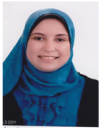Day 3 :
- Track 7: Experimental Nephrology and Renal Anaemia
Track 8: Treatment and Surgery for Renal diseases
Track 9: Diagnostic, Imaging and Radiation techniques
Chair
Michael F Michelis
Lenox Hill Hospital, USA
Co-Chair
Christine N Metz
The Feinstein Institute for Medical Research, USA
Session Introduction
Michael F Michelis
Lenox Hill Hospital, USA
Title: Argnine Vasopressin: What else does it do?
Time : 09:30-09:55

Biography:
Michael F Michelis is Director of Nephrology at Lenox Hill Hospital in New York and Clinical Professor of Medicine at New York University School of Medicine. He received his training in renal disease at the University of Pittsburgh and was a member of the faculty there before moving to New York. Dr Michelis is a Fellow of the American College of Physicians, a Specialist in Clinical Hypertension and a Fellow of the American Society of Nephrology. Dr Michelis has been principal investigator on many clinical trials and has authored numerous publications. Dr. Michelis directed clinical studies which characterized an unrecognized genetic kidney disease now referred to as Michelis-Castrillo Syndrome.
Abstract:
The pressor and antidiuretic actions of arginine vasopressin (AVP) have been well documented. It is also important to focus on less widely appreciated actions of AVP. In addition to effects on hemostasis, pain, aging, social behavior and cognition, AVP has important relationships to bone metabolism and a variety of metabolic systems which involve changes that have significant effects on nephrologic outcomes. These include involvement with the hypothalamic-pituitary-axis, inflammatory responses, cell proliferation and reaction to urinary infection, as well as components of the metabolic syndrome such as diabetes mellitus, lipid metabolism and hypertension. Finally, possible direct effects of AVP on the progression of chronic kidney disease will be considered.
Qilian Xie
Anhui Provincial Children\\\'s Hospital, China
Title: Accompanying mild hypothermia significantly improved the prognosis of septic mice than artificial mild hypothermia
Time : 10:20-10:45
Biography:
Qilian Xie is a Professor of Anhu Medical University, He has completed his MD from Hebei Medical University in 2008 and postdoctoral studies from London Empire College.He is the director of Emergency department in Anhu Medical University Anhui provincial children’s hospital. He has published more than 10 papers in various journals.
Abstract:
Some patients with sepsis are found with accompanying mild hypothermia (ACMH); however, the effects of ACMH on the patients with sepsis are poorly understood. Endotoxin plays a very important role in the pathogenesis of sepsis caused by the Gramnegative bacterial infections; in addition, lipopolysaccharide (LPS) could also induce hypothermic reactions in rodents. Hence, in the our study, intraperitoneal injection of LPS was performed to induce sepsis in BALB/c mice, and then the mice were divided into different groups, namely accompanying mild hypothermia(ACMH), un-hypothermia (UH), keep normothermia (KN), and artificial mild hypothermia (ATMH) groups, according to the anal temperature and the thermic intervention strategy. After injected LPS, mice might gradually appear rectal temperature changes. According to the monitoring results of rectal temperature changes 1 hour after LPS injection, the mice were subdivided into the accompanying hypothermia group (rectal temperature ≤36) and the non-hypothermia group (rectal temperature>36). In the accompanying hypothermia group, because the therapeutic range of hypothermia was 32~34, our experiment set the range of mild hypothermia as 34~36 , so the mice with rectal temperature below 34 were removed, and those with rectal temperature within 34-36 were retained, and the latter were then randomly divided into the accompanying mild hypothermia group (ACMH)) and the keep normothermia group (KN)), group ACMH did not perform any temperature intervention, while group KN was placed into incubator to maintain the rectal temperature within 36.0-37.5, aiming to simulate the thermal treatment towards clinical mild hypothermic patients. In the non- hypothermia group, mice were randomly divided into the un-hypothermia group (UH) and the artificial mild hypothermia group (ATMH), group UH did not perform any temperature intervention, while group ATMH was placed into hypothermic blanket to maintain mice’s rectal temperature as 34-36, aiming to simulate clinical mild hypothermia temperature towards the patients with normal or fever. Artificial mild hypothermia and normothermia-keeping treatments were performed with the speed as 0.5/h. The mortality rate, serum levels of tumor necrosis factor-alpha (TNF-α), interferon-gamma (IFN-γ), and interleukin (IL)-4 and liver and renal functions of the mice in each group were recorded. Liver, lung, and renal tissues of the mice were stained and examined under optic microscope. Our study is to compare the impacts of ACMH and artificial mild hypothermia (ATMH) on mortality, systemic inflammatory reactions and organ functions in mice with sepsis. In this study we found the mortality rate in the ACMH group was the lowest among all the sepsis groups. Increased serum levels of TNF-α, IFN-γ, and IL-4 and impairments of the liver and renal functions were found in the septic mice. The serum levels of TNF-α, IFN-γ, and IL-4 were significantly lower and the liver and renal functions of ACMH group were not impaired significantly as compared with other sepsis groups. Pathological examinations of the lung, liver, and renal tissues showed that ACMH group were with the lowest pathological score among all the sepsis groups, so ACMH and ATMH could both reduce mortalities in mice with sepsis, and ACMH could reduce mortality even lower, and more alleviate systemic inflammatory responses, and the damages in lung, kidney and other organs were lighter.
Sohini Sengupta Neogi
Sir Gangaram Hospital, India
Title: Elevated tumor marker CA125: Interpretations in renal disease
Time : 10:45-11:10

Biography:
Sohini Sengupta Neogi has completed her MD and DNB in Biochemistry from India. She is the first Post-doctoral Fellow in Laboratory Medicine from the National Board of Examinations, India. She is currently working as an Associate Consultant and Assistant Professor in the Department of Biochemistry Sir Gangaram Hospital & Gangaram Institute of Post-graduate Medical Education & Research, India. She has several national and international publications and has presented papers in numerous conferences of repute. She has won several awards and in 2013, she has received the Best Paper Award for her oral presentation in the National Conference of Clinical Biochemists of India.
Abstract:
Tumor markers like CA125 are routinely used for the purpose of screening and diagnosis of several malignant conditions. Elevated levels of several tumour markers can be frequently detected in patients with impaired kidney function because of disturbed renal elimination or presence of neoplasia, given the higher risk of developing malignancies in these patients. The possibility of false positive results notably reduces the diagnostic value of those markers that are mainly eliminated by renal excretion. Our institute has a large base of nephrology patients undergoing dialysis and transplants and hence, our interest lies in this area. In our hospital, the biological reference interval (BRI) in use for CA125 is less than 35 IU/mL. The serum CA-125 level is within normal limits in majority of haemodialysis and stable CAPD patients. In peritoneal dialysis, CA 125 is elevated after peritonitis and after catheter replacement.The serum CA-125 level should be interpreted with caution in the CAPD patients as it may be a non-specific marker of peritoneal irritation. CA 125 serum level is elevated in male patients of chronic kidney disease but is not influenced by kidney transplant. The BRI for other tumour markers like fPSA, CA15.3 and CA19.9 markers in our laboratory is <0.25 ng/mL, 0-31 U/mL and 0-35 U/ mL respectively. These markers also show an increase in patients of haemodialysis. We thus conclude that elevated level of tumour markers need to be evaluated judiciously in patients of chronic renal disease particularly women in the reproductive age group to prevent them from being subjected to unnecessary exploratory interventions.
Christine N Metz
The Feinstein Institute for Medical Research, USA
Title: Magnesium (Mg) deficiency worsens and Mg replacement protects against cisplatin-induced kidney injury in non-tumor and tumor-bearing mice
Time : 11:30-11:55

Biography:
Christine N Metz completed her PhD at New York University and postdoctoral studies from New York University and the Picower Institute. Currently, she is the Head of the Laboratory of Medicinal Biochemistry at the Feinstein Institute for Medical Research and Professor, Department of Molecular Medicine at the Hofstra-North Shore-LIJ School of Medicine. Dr. Metz has been working in the field of inflammation for the past twenty years. She has published more than 125 papers in peer-reviewed and reputed journals, holds 5 patents related to her work, and has served as an editorial reviewer for numerous journals.
Abstract:
Cisplatin is a potent chemotherapy for treating ovarian and other cancers. Cisplatin-induced acute kidney injury (AKI) occurs in ~25% of patients, while hypomagnesemia occurs in 90% of patients. Previous studies have implicated magnesium (Mg) status in cisplatin-induced AKI. We explored the effect of Mg deficiency (MgD) (±Mg supplementation, MgS) in a mouse model of cisplatin-induced AKI. In addition, using an ovarian (A2780) tumor xenograft model, we examined the effect of Mg status on cisplatin-induced AKI and the anti-tumor efficacy of cisplatin. In both non-tumor- and tumor-bearing mice, Mg deficiency (MgD) significantly worsened cisplatin-induced AKI (based on BUN, inflammation, apoptosis and histological scores), while MgS significantly protected against cisplatin-induced AKI. Tumor growth was inhibited by cisplatin and further inhibited by MgS on day22. MgD did not affect tumor growth or cisplatin-mediating tumor killing. Ongoing studies are exploring the role of Mg status in tumor growth and cisplatin-induced AKI in additional tumor models in mice. In summary, MgD worsens and MgS protects against cisplatin-induced AKI, as evidenced by improved kidney function, and reduced renal inflammation and apoptosis. While improving kidney function, MgS also improved cisplatin-induced tumor killing. Mechanistic studies reveal that MgD increases accumulation through regulating cisplatin transporter expression/function in the kidneys; these effects are not observed in the tumor. These findings warrant future large scale studies to assess Mg status and aggressive Mg replacement therapy in cisplatin-treated patients. In addition, assessment of dose, formulation, and timing/duration of Mg replacement in cisplatin-treated patients should be considered to promote renoprotection.
Bhaskar Reddy
Waitemata District Health Board, New Zealand
Title: Persuade of prevention of renal failure in an imperfect world, is it possible in the 21st century?
Time : 11:55-12:20
Biography:
Bhaskar Reddy has completed his Science degree from The University of Madras and since 1994 he has been working in renal service at Apollo Hospitals, Chennai, India. Later he moved to Singapore NKF and worked for few years, and in 2000 he migrated to New Zealand and continued his profession at Auckland District Heal Board. He has completed Board of Nephrology Examiners Nursing and Technology in 2003. He has more than 20 years experience in the field of hemodialysis and has been serving as a clinical renal physiologist and senior member of satellite dialysis unit at Waitemata District Health Board currently. His research interest is in prevention of renal failure in the community level and because of the specific purpose he is also studying Post Graduate Diploma in Public Health at Massey University, New Zealand.
Abstract:
Kidney disease is a worldwide public health problem. There is an increasing incidence and prevalence of patients with kidney failure requiring renal replacement therapy around the world. World needs an institution to tackle this issue, the international society of nephrology (ISN) and the international federation of kidney foundations (IFKF) joined initiative to start world kidney day in 2006 to addresses this issue globally. Treating renal failure is the real concern globally due to the impact of this disease and high cost; it is not surprising in recent time even developed countries struggling to get funding to treat renal failure. It requires urgent attention to address this issue around the world. What progress we made so far? And what change we need for our future generation? This is our time to answer the call, Renal replacement therapy and kidney transplantation alone is not the solution for this increasingly dangerous disease. What is the solution? It is time for all of us to focus on the preventable kidney diseases.
Chaudhary Muhammad Junaid Nazar
Pakistan Institute of Medical Science, Pakistan
Title: Efficacy of dietary interventions in end stage renal disease patients
Time : 12:20-12:45

Biography:
Junaid Nazar has completed MD Internal Medicine from University of Buckingham, UK in 2015. He is Master in Public Health from University of Bedfordshire, Master of Science in Nephrology from University of Brighton, Fellow of Royal Society of Public from royal society of Public Health. He completed his under graduation from Islamic International Medical College in 2008 .In addition he is author of 21 publications available with pubmed, Google scholar and other prestigious journals. Moreover, he is a member of renal association, Royal society of medicine, European Society of Nephrology and Royal Society of Public Health. Currently, he is working as a clinical fellow in Nephrology department, Shaheed Zulfiqar Ali Bhutto Medical University, Pakistan Institute of Medical Sciences, Pakistan.
Abstract:
End stage renal disease (ESRD) is the last stage of chronic kidney disease. ESRD results due to multiple risk factors such as hypertension, cardiovascular diseases, DM, stroke and many others. These risk factors are preventable and treatable. All the risk factors are treatable simply by adopting healthy life style for example eating balance diet and doing exercise etc. Several studies supports that use of good balance diet improves the condition of ESRD patients. Therefore, this systematic review was performed to find out how diet can help to improve the condition of ESRD patients and to indicate what are the risk factors effecting the action of diet itself to stop it form having good clinical outcomes.
Manuela Stoicescu
University of Oradea, Romania
Title: Workshop Video Presentation on Psychiatric symptoms in the kidney disease original case report
Time : 12:45-13:20

Biography:
Manuela Stoicescu, Consultant Internal Medicine Doctor (PhD in Internal Medicine) now is Assistant Professor of Medical Disciplines Department, University of Oradea, Faculty of Medicine and Pharmacy, Romania, Internal Medicine Hospital and Office. She is Member of Romanian Society of Internal Medicine, Member of Romanian Society of Cardiology, Chemistry, Biochemistry and Member of Balcanic Society of Medicine.
Abstract:
Present the clinical case of a patient 60 years old who was hospitalized in the first moment in the Psychiatric Department for psychical manifestations (extremely agitation, deliria and aggressively) but sudden, in a few hours, go in to a coma and for this reason was sent urgently in the Emergency Department and performed an Internal Medicine consultation. The patient was in Coma Glasgow 2; the history was impossible to take from the patient and was without family. At the objective examination he was pale, very thin, HR =78bates/min rhythmic, vesicular sound normal, BP=130/80mmHg, palpation of the abdomen relived a big formation (7/8cm) round, regular with high consistency in to the hypogastria area. Surprised were the results of the blood test relieved: creatinina=5,8mg/dl, urea=500mg/dl, K=6mEq/l, white blood cells=14 000/ mm³, neutrophiles=76%, lymphocytes=82%.Hb=10mg/dl, Ht=38%, Red blood cells=3millions/mm³.Except these results other blood tests were in normal range. So was a uremic coma. An abdominal echo was performed and showed a very big glob bladder (retention of the urine) with increase sedimentation inside of the bladder, prostate big, homogeneous with regular border, suggested an adenoma of the prostate and the both kidneys were small with irregular borders. Other organs were normal at the abdominal echo. Because of the presence of the glob bladder the patient was performed a urinary probing by urethra with a tube to eliminate the urine from the bladder. Unexpected in the tub not appeared urine. Was eliminated a very gross pus, white-yellowish, bed smell and sometimes blocked the tube, stopped elimination and must to be aspired with the needle and siring with serum to can be evacuated. The lab examination of this pus relieved increase leukocyte and lymphocytes level but unexpected the urine culture was negative (sterile) in context of this gross pus. For this reason was inseminated on Lowenstein Jensen culture medium and the result was surprise positive confirmed TB etiology of the infection and in conclusion the puss was in reality casseum. The final diagnosis was: tuberculosis of the kidney, TB infection, chronic renal failure, uremic coma with uremic encephalopathy, adenoma of the prostate, glob bladder. The therapy was: urinary probing for evacuation the urinary glob bladder, saline solution perfusion and glucose tampon with insulin for correction of hyperpotasemia, dialyses, tuberculostatic therapy with a good evolution of the patient.
Mahamane Kalil Maiga
University of Berlin, Germany
Title: Post kidney transplantation diabetes
Time : 14:00-14:25

Biography:
Mahamane Kalil Maiga, MD, DSc, MPH; FACHARZT internal medicine and nephrology Free University of Berlin Germany 1981; Professor of nephrology title Descartes University France 1984; Adjunct Professor of public health Boston University USA 1988-1991; Head of the Nephrology Department University Hospital Point G, Mali 1981; Professor of Nephrology University of Mali 1981; author of more than 50 publications.
Abstract:
Renal transplantation is the best treatment of terminal renal insufficiency. This therapy is relatively well secured, thanks to the advent of new immunosuppressive agents. These new drugs have decreased the occurrence of acute rejection, but they are purveyors of multiple side effects such as infections, cancers, diabetes de novo after organs transplantation. In order to prevent further morbidity and mortality related to cardiovasculaar disorders in kidney transplanted patients, these risk factors should be identified prior to undertake kidney transplantation.
Ruqiya Al-Za’abi
University of Glasgow, UK
Title: End-stage renal disease in north region of Oman: Epidemiology, incidence and aetiology
Time : 14:25-14:50
Biography:
Ruqiya Al-Za’abi is a PhD student at University of Glasgow, College of Medicine, Veterinary and Life Sciences, School of Nursing. She acquired her Master degree from University of Central Lancashire, UK and her Bachelor Degree in Nursing from USA. She has been employed as a nurse tutor since 2003, teaching adult health nursing subjects including renal and urinary relevant topics to nursing students in Oman. Her primary research interest is renal disease, in particular, the challenges facing ESRD patients. She hopes to find ways to improve the quality of life for people with ESRD in Oman and to disseminate the result of her work.
Abstract:
The epidemic of End Stage Renal Disease (ESRD) is reported by most countries of the world. Yet, the information about incidence and prevalence in the Western world and Japan is increasing due to the renal registries dynamic. The highest incidence for ESRD was reported by USA and Japan as 357 and 296 patients per million populations (pmp) per annum respectively. The highest prevalence was announced by the same countries, USA and Japan. In fact, Japan reported higher prevalence than USA (2213) pmp per annum versus 1763 pmpper annum in 2011. On the other hand, the developed and Arab countries have a limited epidemiological profile for ESRD. Unfortunately, the present ESRD profile for these countries is out of date except for Libya and Palestine. In Oman, the last prevalence reported was for the year 1998 when ESRD prevalence was 348 and incidence was 120 pmp per annum. The Ministry of Health in Oman reported the prevalence of 1221 ESRD patients who were undergoing maintenance dialysis by the end of the year 2012 but no incidence or additional data about patients’ characteristics or disease profile were reported. Currently, there is lack of data on ESRD in Oman. This cross-sectional study aims to develop the first description of the epidemiology and characteristics of dialysis-treated ESRD in the North Region of Oman. Data collection started on August, 2014. The prevalence, incidence and mortality rate variables will be followed until December, 2015. The primarily results, after collecting data of 346 patients on dialysis, is showing an increase in the prevalence and incidence of ESRD in North of Oman. The predominantly cause of ESRD perhaps is hypertension and diabetes.
Nikola M. Fatic
Clinical Centre of Montenegro, Montenegro
Title: Challenge for treatment - Bilateral renal artery aneurysms
Time : 14:50-15:15

Biography:
Nikola Fatic, 30 years old, is vascular surgeon in training from Clinical Centre of
Montenegro. He is PD candidate at Medical Faculty of Kragujevac, Serbia. He is national representative of Montenegro at European Society for Vascular and endovascular surgery (ESVT/ESVS). He has published more than 10 papers in reputed journals and has been serving as a reviewer in reputed journals.
Abstract:
Visceral artery aneurysms (VAA) are rare entities, with an estimated incidence between 0,01% and 0,2%. Ability to use advanced imaging technology such as computed tomography, magnetic resonance, ultrasonography etc. has increased incidental detection of asymptomatic visceral aneurysms. Incidence of renal artery aneurysm is 22% of all VAA and the prevalence in the general population is from 0,01% up to 1%. Renal artery aneurysms are bilateral in about 10% of cases. Usually they have been described separately, because of slightly shown difference in etiology, natural history and strongly correspondence with hypertension. The most frequent cause is atherosclerosis (32%). There are controversial data about the rate rupture of renal artery aneurysm. Previous study reported the rupture rate for renal artery aneurysms is less than 3%. In a recently published series, asymptomatic RRAs being managed conservatively no rupture was observed in a mean follow period of 3 years. From the other side some previous study reported different rate rupture of renal artery aneurysm, about 30%, especially when it\'s located after bifurcation of the main renal artery, closer to the renal calyx. Depending of the size and location, rupture of these lesions might be associated with high mortality rate, 25% to 75%. Beside rupture, thrombosis and distal embolization are well known complications of renal and aneurysms. We report an unusual case presented with both renal arteries aneurysms in combination with splenic artery aneurysm.
Bruce L Riser
Henry Ford Hospital, USA
Title: CCN3-based therapy: A first-in-class preventative and treatment to block and reverse renal and other organ fibrosis complicating diabetes
Time : 15:35-16:00

Biography:
Bruce L. Riser was a Senior Staff Member and Director of the Renal Research Program in the Nephrology Division at Henry Ford Hospital, Detroit for 13 years then Director of R&D at Baxter Healthcare, Renal Division, for 11 years. In 2013 he founded BLR Bio an emerging biotechnology company focused on the diagnosis, prevention, and treatment of renal and other forms of fibrosis. The technology was created at Rosalind Franklin University of Medicine and Science in a laboratory effort he led over the last 12 years while also at Baxter. He holds an MS in Public Health and a PhD in cell/molecular biology both from the School of Public Health, and a postdoctoral degree in Pathology from the Medical School, all at The University of Michigan.
Abstract:
We first demonstrated a role for the matricellular protein CCN2 (formerly CTGF) as a critical downstream pro-fibrotic element in renal fibrosis. Then, in 2009 we published the first work identifying a role for CCN3 (NOV), another family member, as a co-regulating molecule working in a yin/yang manner to block mesangial cell transformation to a fibroblast phenotype and the over-production of collagen. Recently, we conducted pharmacokinetic and proof-of-principle efficacy studies in the BT/BR ob/ob mouse as a best rodent model of human diabetic nephropathy (DN). We showed that IV and IP dosing resulted in primary drug targeting to the kidney and a suitable half-life. A 3x/week treatment for 8 weeks, beginning in established DN, completely blocked and returned to normal the overexpression of key pro-fibrosis genes. Further, it completely blocked and reversed podocyte cell loss, glomerular fibrosis, reduction of kidney function and albuminuria. We therefore elucidated mechanisms operating at multiple therapeutic levels or pathways; both upstream (protecting against cell injury) and downstream (regulating CCN2 activity and ECM metabolism/accumulation. The unexpected protection from podocyte injury and glomerular hypertrophy is extremely important, since it is a key early marker of DN and thought to be critical to the development of proteinuria and glomerular / interstitial fibrosis. Most recently, we have identified key regions on the CCN3 protein, and created small peptide mimetics to specifically replicate the anti-fibrotic activity of CCN3 without additional unrelated functions. We have similarly tested these therapeutics in the BT/BR ob/ob mouse and other models of fibrosis with very positive results. BLR Bio is currently developing this as a platform for the treatment of renal disease.
Vassilios Vargemezis
University General Hospital Greece
Title: Prophylactic ozone administration reduces renal ischemia-reperfusion injury in the rat

Biography:
Abstract:
Introduction: Ischemia/reperfusion injury, which is commonly seen in the field of renal surgery or transplantation, is a major cause of acute renal failure. Various beneficial effects of ozone have been shown. Among these, it’s triggering the formation of new capillary,increasing the number of defensive cells in immune response, and cellular energy release, and anti-oxidant efficacy may be mentioned.The objective of this study was to examine the role of the Ozone oxidative preconditioning in modulating inflammation and apoptosis after renal ischemia/reperfusion injury.Material and Method: After the approval of Selcuk University animal ethics committee, 27 Wistar rats were randomized into four groups. Sham-operated control group (n:6) was administered SF intraperitoneal seven days without creating ischemia reperfusion injury and at eight day the rats were sacrified. Ozone group (n:7) was administered 1 mg/kg ozone intraperitoneal for seven days without creating ischemia reperfusion injury and at eight day the rats were sacrified. Ischemia Reperfusion (IR) group (I/R) (n:7) were subjected to renal ischemia for 1 hour by left renal artery and vein were occluded with a nontraumatic clamp and then reperfusion for two hours. In Ozone + IR group, 1 mg/kg ozone was administered intraperitoneally for seven days before the ischemia/reperfusion procedure and at eight day the ischemia reperfusion injury was created (as in group 2) and rats were scarified at the same day. Subsequently, occlusion was terminated after 2nd hour of reperfusion, rats were anesthetized with 80 mg/kg ketamin and their intracardiac blood was drawn completely and they were sacrificed. Renal tissue samples were sent to laboratory for superoxide dismutase (SOD), glutation peroxidase (GSH-Px), malondyaldehide (MDA) and blood samples were sent for total oxidant score(TOS) and total antioxidant capacity (TAC) analysis. The degree of renal injury was evaluated by structural changes in proximal tubules (tubular atrophy, loss of tubular brush border, vacuolization, tubular dilatation, cast formation), mononuclear cells (MNCs) infiltration, interstitial structural changes, renal corpuscle morphology, and necrotic and apoptotic cells. Data were evaluated statistically by Kruskal Wallis test.Results: In ischemia-reperfusion group, the degree of renal injury was found highest and statically significantly compared to the other groups (p<0.05). In the group administered ozone before ischemia reperfusion procedure, renal injury was found to be decreased in comparison to ischemia reperfusion group (p<0.05). In sham control group administered only sf without creating renal ischemia/reperfusion injury, renal injury score was the lowest compared to the other groups (p<0.05). The difference according to the antioxidant parameters SOD, GPX TAC values were found to be increased in ozone group and lowest in IR group (p<0.05). The difference according to the oxidant parameters MDA and TOS were found to be highest in IR group and decreased in ozone group(p<0.05).Discussion: Ischemic tissue reperfusion aggravates acute ischemic injury via the formation of reactive oxygen and nitrogen components. In the present study, ozone administration had an effect improving renal I/R injury. Ozone preconditioning was ameliorated ischemic reperfusion injury and renal ischemia reperfusion injury score was decreased significantly. In the present study, ozone therapy prevented from ischemia reperfusion injury. Further studies are required to explain the mechanisms mediating the protective effect of ozone on renal IR injury.
Rizo-Topete Lilia Maria
University of Nuevo Leon, Mexico
Title: Experience in CRRT using PRISMA monitor in the ICU of a university hospital in Northeast mexico

Biography:
Lilia Rizo Topete has completed his PhD at the age of 24 years from ITESM (Instituto Tecnólogico de Estudios Superiores de Monterrey) and finish her internal medicine subspeciality in Christus Muguerza Hospital associated at Christus Health and Universidad de Monterrey, she is in her third year of her nephrology fellow at the University Autonomous from Nuevo León , “José Eleuterio González†Hospital. She is chief resident at the Nephrology Service, she has been interested at CRRT and AKI with some journal publications and congress abstracts.Lilia Rizo Topete has completed his PhD at the age of 24 years from ITESM (Instituto Tecnólogico de Estudios Superiores de Monterrey) and finish her internal medicine subspeciality in Christus Muguerza Hospital associated at Christus Health and Universidad de Monterrey, she is in her third year of her nephrology fellow at the University Autonomous from Nuevo León , “José Eleuterio González†Hospital. She is chief resident at the Nephrology Service, she has been interested at CRRT and AKI with some journal publications and congress abstracts.Lilia Rizo Topete has completed his PhD at the age of 24 years from ITESM (Instituto Tecnólogico de Estudios Superiores de Monterrey) and finish her internal medicine subspeciality in Christus Muguerza Hospital associated at Christus Health and Universidad de Monterrey, she is in her third year of her nephrology fellow at the University Autonomous from Nuevo León , “José Eleuterio González†Hospital. She is chief resident at the Nephrology Service, she has been interested at CRRT and AKI with some journal publications and congress abstracts.Lilia Rizo Topete has completed his PhD at the age of 24 years from ITESM (Instituto Tecnólogico de Estudios Superiores de Monterrey) and finish her internal medicine subspeciality in Christus Muguerza Hospital associated at Christus Health and Universidad de Monterrey, she is in her third year of her nephrology fellow at the University Autonomous from Nuevo León , “José Eleuterio González†Hospital. She is chief resident at the Nephrology Service, she has been interested at CRRT and AKI with some journal publications and congress abstracts.
Abstract:
The AKI appears in 5-25% of patients in ICU, of which 6% will require RRT. If the AKI is associated with MODS mortality will be 50% and if RRT is required this will be 80%. Sepsis and Acute tubular perfussion are causes of AKI. The CRRT is an option for hemodynamically unstable patients and those whom can not handle the volume or metabolic disorders. The hemodialysis (HD) in critical patients is a common practice, however, the use of continous therapy with hemodiafiltration modality requires a special characteristics. Objective: Describe the experience using PRISMA monitor in our center. Material and Methods: Retrospective, descriptive, observational study,All patients who were given CRRT with PRISMA our center from March 2013 to November 2014. Data analysis was performed using Excel and SPSS programs. There is no conflict of interest and was conducted according to the ethics committee of our hospital. Results: CRRT was applied in an active way to 18 patients, 15 males (83%) and 3 females (17%), the average age was 43.9 years (Min. 17 Max. 78). 14 presented AKIN III, 4 where known with CKD. The most common cause of AKI was septic shock (83.3%). The oliguric AKI was the most common form of presentation in 86% of the patients. The average days of stay on ICU 17.5 days (SD 16.5). The average days of arrival and development of AKI is 2.6 days (SD 2.9). APACHE II and SOFA admission average was 30.5 (SD 6.5) and 13.6 (of 3.9) respectively. It was possible to stop CRRT in 5 of 18 patients (27.7 %), 2 patients continued with HD. There was a patient with combined therapy PRISMA-MARS. Only 3 out of 18 patients (20%) survived the hospital stay. In the comparative analysis of the groups: survivors versus non survivors there were non statistically significant differences in the SOFA and APACHE II scores or in the days of stay in the ICU with a IC of 95%. As for the prescription, blood flow measured in ml/min, extraction measured in ml/hr, the dialysate, the reinjection and total UF, showed no statistically significant differences with a IC of 95%. Discussion and Conclusions: According to the results, our experience is similar to that reported in the literature with high mortality in patients with AKI and MODS, despite improvement in renal function. With the methodology used and the present number of patients, it´s not possible to point out a good or bad prediction factor on the clinical characteristics of the patients or the therapeutic prescription.

Biography:
Abstract:
Background: We analyze the results of renal transplantation among recipients over 65 years old over a 3 year periods (2008-2012) from a single renal transplantation unit and compare results with younger recipients. Methods: We retrospectively analyzed the outcomes of 2018 renal transplants performed between November 2008 and December 2012. Chi-square (ï£2) test for the comparison of categorical data and Students t test was used for the analysis of continuous variables. Patient and graft cumulative actuarial survivals calculated via Kaplan-Meier analysis were tested for differences with the Mantel- Cox log-rank test.
Gargouri Mohamed mourad
La Rabta Hospital Tunis, Tunisia
Title: Severe sepsis secondary to emphysematous cystitis
Biography:
Gargouri Mohamed mourad was graduated from the university of Tunis and currently working as nephrologist in La Rabta Hospital Tunis, Tunisia.
Abstract:
Emphysematous cystitis (EC) is a rare, a rapidly progressive infection, characterized by gas formation within the bladder wall. Gas production is mainly due to fermentation of glucose or albumin by the pathogen organisms. Herein, we present a case of EC that was presented with severe sepsis, in the absence of known risk factors. The patient had, also, two calculi within the bladder and had Horseshoe kidney. Laboratory work-up showed a high creatinine level, thrombocytopenia and hyperbilirubinemia. Diagnosis of EC was made by ultrasonography, showing a circumferential, acoustic shadow around the bladder wall. Computed tomography confirmed the diagnosis. With appropriate antibiotics and bladder drainage, healing was rapid. Endoscopic disintegration of stone was realized three weeks later and follow-up was uneventful.
Chanjuan Cui
Peking University, China
Title: Evaluation of clinical significance of the serum anti-C1q in lupus renal pathological type

Biography:
Chanjuan cui who is 28 years old is studying for her Ph.D at Medical department of the Peking University. She majors in immunology and has participated in the writing of clinical examination and diagnostic thinking: Volume autoimmune diseases in China. She has published 2 papers.
Abstract:
A prolonged exposure of the ï¬rst component of the classical pathway of the complement system (C1q) epitopes to the immune system could lead to an autoimmune response against itself. Although the presence of anti-C1q autoantibodies has been described in patients with autoimmune diseases as well as infectious diseases. Interestingly, these autoantibodies are strongly correlated to lupus nephritis (LN). Additionally, it was suggested that anti-C1q autoantibodies could play a role in LN pathogenesis. The aim of our study was to investigate the clinical utility of anti-C1q in predicting renal flares of Systemic lupus erythematosus (SLE) nephritis as well as lupus renal pathology. Serum anti-C1q was tested from 192 SLE patients (including 131 cases with LN and 61cases without LN). The positive rate of anti-C1q in LN was higher than that in non LN with [39.69% (52/131) vs. 21.31% (13/61), P=0.012]. The prevalence of anti-C1q in patients with diffuse proliferative renal lesions (class IV) was higher than that in patients with non-diffuse proliferative renal lesions class (â…¡/â…¢) (χ2=5.893, P =0.015). In conclution, the serum anti-C1q, a simple, specific and non-invasive biomarker, can objectively reflect LN and effectively guide the clinical judgment of LN pathological types, particularly diffuse proliferative LN (class IV).
Kai Song
Soochow University School of Medicine, China
Title: Hydrogen sulfide inhibits the renal fibrosis of chronic kidney disease

Biography:
Kai Song has completed his PhD at the age of 33 years from Soochow University, China. He used to receive postdoctoral training in Morehouse School of Medicine from 2009-2010. He is the vice-director of the renal department in the Second Affiliated hospital of Soochow University. He has published more than 20 papers in peer-review journals on the field of hydrogen sulfide and chronic kidney disease, hemodialysis and peritoneal dialysis.
Abstract:
Hydrogen sulfide (H2S) represents the third gasotransmitter along with nitric oxide and carbon monoxide. Recently it has been found that H2S levels was decreased in chronic kidney disease, but its physiological functions in kidney have not been fully elucidated. Previous work demonstrate that H2S has diuretic, natriuretic, and kaliuretic properties. It can also increase glomerular filtration rate and functions as an oxygen sensor in the renal medulla. Using the rat model of unilateral ureteral obstruction, we verified that cystathionine-β-synthase was the dominant H2S-producing enzyme located in renal tubular while another H2S-generating enzyme cystathionine-γ-lyase was mainly expressed in glomeruli. Administration with 56μg/kg.d sodium hydrogensulfide (a H2S donor) inhibited renal fibrosis by attenuating the production of collagen, extracellular matrix, and the expression of a-smooth muscle actin. The underlying mechanisms were associated with the anti-inflammation effect of H2S as well as its anti-proliferative and anti-differentiation properties on renal fibroblasts. Using a rate model of peritoneal fibrosis, our current data also confirmed that H2S was able to improved the peritoneal function and inhibits peritoneal fibrosis caused by peritoneal dialysis solution. Thus, low doses of H2S or its releasing compounds may have therapeutic potentials in treating chronic kidney disease.
Rania Nabil Bedair
Medical Research Institute, Egypt
Title: Angiotensin II type 1 receptor (A1166C) gene polymorphism in egyptian adult hemodialysis patients

Biography:
Rania Nabil Bedair has completed her M.B.BCh in Alexandria Faculty of Medicine in 2003; She worked as a resident in the Chemical Pathology department; Medical Research Institute Alexandria University where she completed her clinical attachment. She got her Msc and MD degrees and she is currently working as a lecturer of Chemical Pathology and Molecular Diagnostics. She attended and participated in a lot of medical conferences and workshops in the field of laboratory medicine and molecular biology and has publications in reputable journals
Abstract:
Introduction: Genetic variability in the genes of different components of renin-angiotensin system (RAS) is likely to contribute for its heterogenous association in renal disease patients. Among the candidate genes of RAS, angiotensin II type 1 receptor gene polymorphism (AT1R A1166C) seems to be particularly biologically and clinically relevant to renal diseases. The aim: This study aimed to evaluate the association of AT1R A1166C gene polymorphism in adult Egyptian hemodialysis (HD) patients. Its association with hypertension was also done. Subjects and methods: The study was conducted on 202 adult Egyptian subjects: 100 controls and 102 HD patients. Determination of this polymorphism was done by PCR/RFLP strategy. Results: The study revealed that HD patients had significantly higher frequency in AC and CC AT1R genotypes than controls. But on dividing these patients to normotensive and hypertensive ones, no significant difference in the genotypes was found. The multiple regression analysis revealed no dependent variables on the AT1R A1166C gene polymorphism. Conclusion: This study suggested that CC/AC genotype could serve as a predictor of an early end-stage renal disease (ESRD) and could, in the future, become an important part of the clinical process of renal risk identification.

Biography:
Sevket Balta has completed his MD at the age of 31 years from Akdeniz university and postdoctoral studies from Gulhane medical faculty, school of medicine. He is the director of Eskisehir Military Hospital. He has published more than 370 papers in reputed journals and has been serving as an editorial board member of some journals. Also, he has published 28 articles about hypertension.
Abstract:
Hypertension is an important health problem in recent years. Inflammation is one of the most etiologic conditions in hypertension. Recently, I have investigated many inflammatory markers in hypertensive patients. I have reported the increased some inflammatory markers in these patients. These inflammatory markers are associated with some complications like cardiovascular and kidney diseases. So, because hypertension may be increased risk of some diseases, I suggest that future studies should investigate the relation between some novel markers and hypertensive complications like renal diseases.

Biography:
Zafer Demirer has completed his MD at the age of 35 years Gulhane Medical Faculty, School of Medicine and postdoctoral studies from Gulhane Medical Faculty, School of Medicine. He is the director of Eskisehir Military Hospital. He has published more than 20 papers in reputed journals. Also, he has published 5 articles about kidney disease.
Abstract:
A 41 year old male patient presented with long standing pain and chronic fistulization at the right loin which were started after the renal surgery that performed on emergency basis 2 years before because of firearm injury. On physical examination vague tenderness and firmness with fistulization at the right loin attracted attention (Figure 1). Laboratory findings were within normal limits. Computed tomography scan revealed a 5 x 3 cm heterogen internal structure in the right retroperitoneum adjacent to the rigt kidney (Figure 2). At surgery, a 5 x 3 cm, well capsulated retroperitoneal mass was excised from the severe adhesion between the right kidney lower pole. The retained surgical sponge was found intraoperatively by cutting the mass.
Zewdneh Shewamene
University of Gondar, Ethiopia
Title: Subacute administration of crude khat (Catha edulis F.) extract induces mild to moderate nephrotoxicity in rats

Biography:
Zewdneh Shewamene completed his MSc in Clinical Pharmacology at the age of 27 years from Addis Ababa University. He is now a Lecturer of Pharmacology in College of Medicine and Health Sciences, University of Gondar, Ethiopia. He has published more than 7 papers in reputed journals and has been serving as coordinator of bio-medical research since 2012.
Abstract:
Background: Although various studies have been conducted to shed light on the pharmacological actions of khat, little or no data are available regarding khat’s effect on the renal redox system. The aim of this study was therefore to investigate the potential of nephrotoxicity associated with khat exposure in rats. Methods: Sprague Dawely rats were randomly assigned into eight experimental groups. Animals were treated with Tween80, gentamicin 100 mg/kg and khat at various doses (100, 200 and 400 mg/kg) alone or in combination with gentamicin for ten days. The animals were then sacrificed to obtain blood and renal tissues for subsequent analysis. Renal markers, including creatinine, blood urea nitrogen, antioxidant enzymes as well as markers for lipid peroxidation were determined using established protocols. In addition, histopathological changes were evaluated with hematoxilin and-eosin staining technique.
Eilean V Lazarus
Sultan Qaboos University, Oman
Title: Effect of Renal Rehabilitation on Quality of Life among Dialysis Patients

Biography:
Eilean V Lazarus was Assistant Professor in Adult and Critical Care Nursing, Sultan Qaboos University, Oman for the past one year. Completed Doctorate in Faculty of Nursing in 2011 Renal Nursing. Having 18 years of teaching experience in Nursing. Simultaneously I was working in Dialysis Unit for the past 11 years in Sri Ramachandra Medical Center, India which is a multi-specialty Hospital with 2500 beds. Currently I am working for ACEN in Standard 1 as co-chair at Sultan Qaboos University, Oman.
Abstract:
To optimize health, improve quality of life among dialysis patients and to develop an information booklet on “Coping with ESRDâ€. Methods: A randomized controlled trial was used. Approval for this study was obtained from the institutional ethics committee. The convenience sample was 150 patients with ESRD receiving dialysis. The intervention group received renal rehabilitation. Knowledge and quality of life were measured using a knowledge questionnaire and the RAND health-related kidney disease quality of life questionnaire at baseline, one month and two months post intervention with reinforcement on the same topics at each visit. The control group received usual care. Results: There was a statistically significant improvement in the mean scores for knowledge about end-stage renal disease (ESRD) among the intervention group compared to the control group (p<0.001). The mean scores of the QoL sub-scales were statistically significant (p <0.001). The sub-scale scores of Energy Fatigue among the intervention group and control group were not statistically different. The mean scores for the KD QoL sub-scales among the intervention group compared to the control group were statistically significant (p<0.01). Implications: Early education about renal disease, its treatments, and the potential to live long and productively can aid in overall adjustment and decision making for people on dialysis. Conclusion: Education was shown to be a positive predictor of physical and mental health for people on hemodialysis. Patients who are encouraged to learn about their treatment have better outcomes and improved quality of life.
